
“Mi Vida Es A Toda Madre” (2023) by Jacqueline Valenzuela.
Art Bug Gallery's next public exhibition “Neo-Chicano: Recuerdos de Mi Familia” explores Chicano art in today's world.
Curated by Steve Galindo and Carlos Rittner, the group show is the first installment of the “LA Futurism” series, a three-part summer curatorial project exploring the evolution of Los Angeles and Chicano/a/x art in the 21st century through the lens of futurism and contemporary painting. “Neo-Chicano,” building on the Los Angeles County Museum of Art and UCLA Chicano Studies Research Center’s “Phantom Sightings: Art after the Chicano Movement” (2008), steps away from political mural traditions and focuses on the painting medium as a personal bridge between lineage and futurism.
“[Latinos] are deeply influenced by pop, street culture and the cultures of our parents—the celebrations, the parties and the colors,” Galindo said. “Although some of us didn’t grow up in the countries where our parents originated, we have the flavor and the remnants translated here in the United States, specifically in L.A. It is important to document how artists are continuing and our culture, marking in American culture the contributions that we make as people, artists and scholars to the narrative of what is Americana.”
Inspired by the Chicano art movement and 20th-century Italian Futurism, which sought to revitalize a decaying culture and focus on the future, “Neo-Chicano” is responding to today’s socio-political climate by drawing on cultural heritage and vibrant hues associated with freedom to reimagine what the movement looks like contemporarily.

“Angel Baby” (2024) by Jacqueline Valenzuela.
This is achieved by showcasing artists who actively interact with memory and identity through a modern LA perspective, which, in this installment, includes Jacqueline Valenzuela, Ricky Sencion also known as Little Ricky and Daniela García Hamilton.
“There will be some installation incorporation and the paintings will feature family members and memories of parties and life growing up in L.A.,” Galindo told CALÓ News. “The colors of the exhibition will be primarily neon. I thought it’d be interesting to take what is traditionally known as Mexican muralism and [see] what the total opposite of that is so that we can start writing the future.”
Galindo not only wants to look at Chicano art through a future-facing lens, but he also strives to help underrepresented artists incorporate themselves into the greater creative canon, which, alongside their crafts, is what drew the curator to these three artists.
“It's difficult for me to discuss a movement like Chicano or Chicanoism without including the queer, feminist perspective, and that's why these three artists are, to me, writing the present and the future of this narrative,” Galindo said.
Valenzuela is an East L.A. native with a Bachelor’s of fine arts in drawing and painting from California State University, Long Beach (CSULB) and a forthcoming Master’s of fine arts in drawing and painting from UCLA. The artist’s vibrant and colorful paintings, constructed with pixelation, geometric shapes and real people and places, are rooted in feminism and bridge the gap between fine art and lowrider culture.

“God Will I Still Be Gay in Heaven” by Little Ricky.
Valenzuela is not only depicting the community in her art, but she is also bringing underrepresented artists to the forefront of the conversation. As someone who has been recognized for her work, Valenzuela is committed to shining a light on fellow Chicana lowrider creatives in the exhibitions she curates, as well as in the interviews she does.
“Besides bridging these artists with the art world, when I'm doing an interview, I always bring in women who I’ve painted so that they can get a platform and their story can be told firsthand,” Valenzuela said, “Sometimes, the art world takes these subcultures and consumes them for the aesthetic, but they don't want to sit next to the woman that I painted. It's important to bring them into these spaces and to make sure that the art world is giving them their flowers.”
An L.A.-born Latinx queer artist, Little Ricky has been in the art space since 1998. It was on the couch that he currently sits on, surrounded by his art, where he first read, in 2013, Alexander McQueen’s words, “I am the pink sheep in the family.” Finding this quote changed Ricky’s life and, in turn, his career.
“It was magic,” Ricky said. “I always felt outside the box in childhood, and even today, so it sparked that feeling of ‘This is me. This is where I've always been.’ I bought a toy sheep the next day because it was just a concept, and I did a lot of sketching. ‘Is it supposed to be a character? Is it supposed to be a real sheep, as opposed to pop art?’ What I have now changed my life forever.”
From the beginning of his career, Ricky’s art has been vibrant and full of life, but the discovery and consistent presence of his beloved pink sheep has made his art into a symbol of utter joy. For “Neo-Chicano,” Ricky has created pieces that center around the cities he has lived in and his family, whom he holds close to his heart.

“Chameleon” (2023) by Daniela García Hamilton.
Tradition and family is the focal point of García Hamilton’s nostalgic portraits of her family members. The first-generation Mexican American painter’s career began, like Valenzuela’s, at CSULB, where she received her Bachelor’s of fine arts in drawing and painting. Her work, which features vibrant brush strokes and embroidery, not only explores her childhood but also draws attention to socio-political commentary on past and current immigrant experiences.
“I didn't have too much exposure to American things until I went to college and I left the bubble. That’s when my work started to shift towards family traditions,” García Hamilton said. “I started remembering some of the events that happened and seeing them through a slightly different lens. Most of [my] work is about me or memories that I have. It just ends up being that my family members are the ones who act out the narratives.”
“Neo-Chicano” is reframing what Chicano Futurism looks and feels like today, with these three artists offering a take on identity, memory and cultural inheritance through their paintings and installations. Whether it is intertwining lowrider paint jobs, fine art and imagination like Valenzuela, understanding that there is more to Chicano art and culture than meets the eye like Little Ricky or envisioning what the next generation will experience based on our past and present like García Hamilton, Chicano Futurism’s meaning is up for interpretation.
And while all art is digested and appreciated by the public, for these artists, and for Galindo, “Neo-Chicano” is a love letter to the past, present and future of the Latino and L.A. community.

“#24” 365+ series by Little Ricky.
“[For] Little Ricky, Dani and me, the work we're making is supposed to be consumed by people outside of our communities,” Valenzuela said. “But, we're truly making it for the people in our community, so they can see themselves reflected in the art world. I feel like that was Steve's main goal. Even within our work, it's all so different; we all are looking at different aspects of Latino culture and American culture, and how we're experiencing it firsthand.”
“Neo-Chicano: Recuerdos de Mi Familia” is open to the public beginning with a reception taking place on July 26 from 2 to 7 p.m., until closing on August 16. The exhibition is located at Art Bug Gallery in Los Angeles. The next two installments of “LA Futurism” next two installments are “Neo-Chicanonismo in Abstraction, Surrealism and Latinidad,” opening on Saturday, August 23, and “L.A. Futurism,” opening on Saturday, September 20.

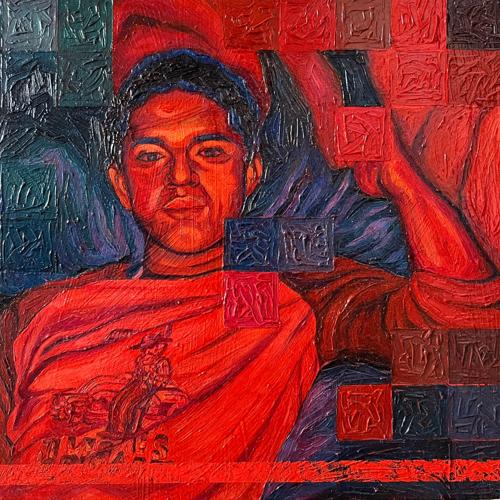
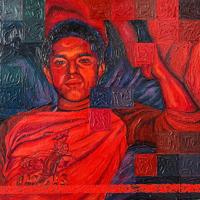
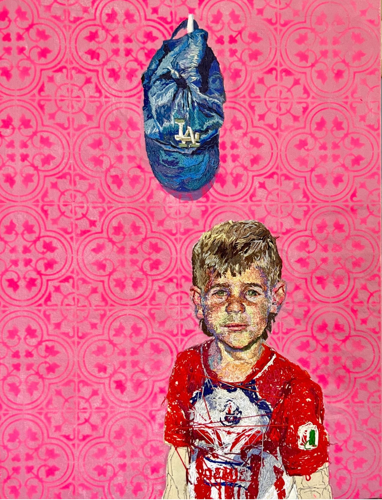
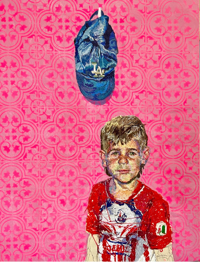



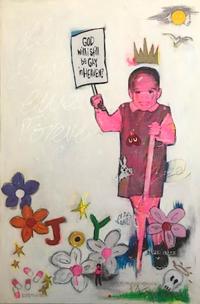
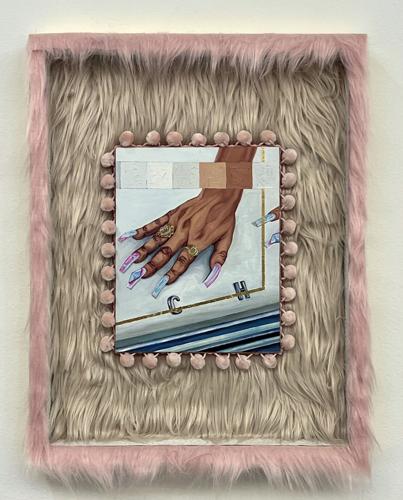
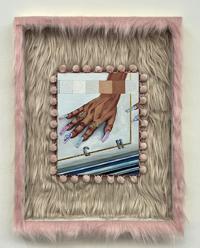



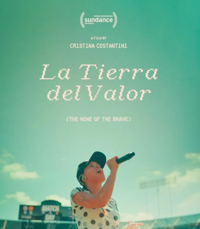




(0) comments
Welcome to the discussion.
Log In
Keep it Clean. Please avoid obscene, vulgar, lewd, racist or sexually-oriented language.
PLEASE TURN OFF YOUR CAPS LOCK.
Don't Threaten. Threats of harming another person will not be tolerated.
Be Truthful. Don't knowingly lie about anyone or anything.
Be Nice. No racism, sexism or any sort of -ism that is degrading to another person.
Be Proactive. Use the 'Report' link on each comment to let us know of abusive posts.
Share with Us. We'd love to hear eyewitness accounts, the history behind an article.